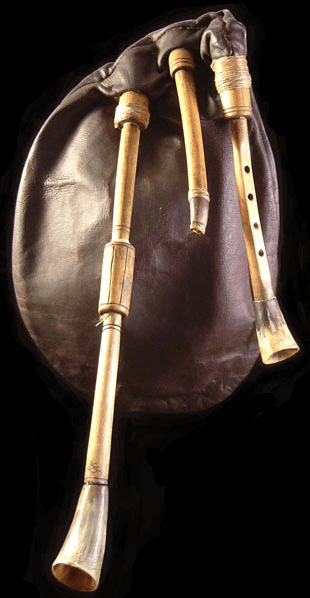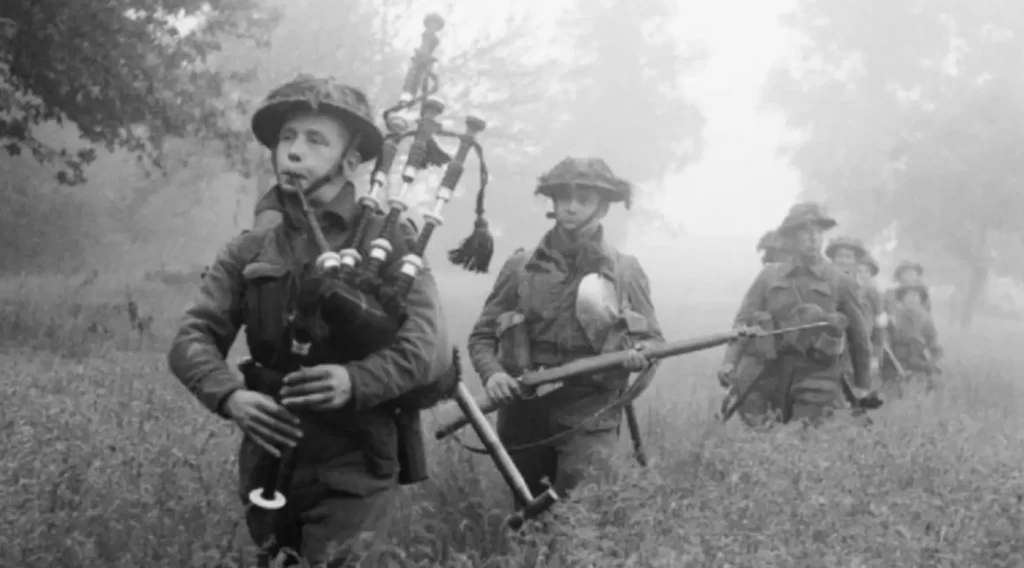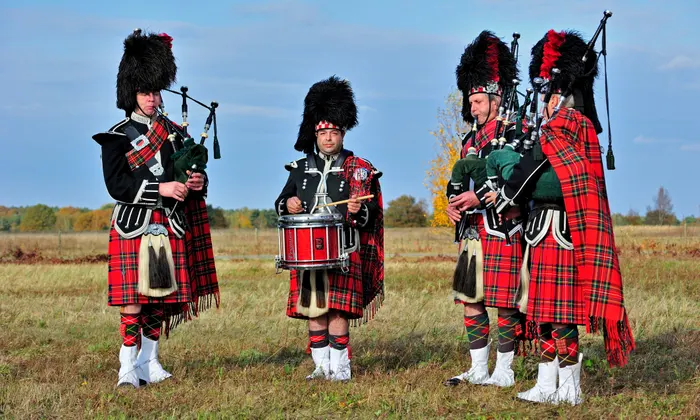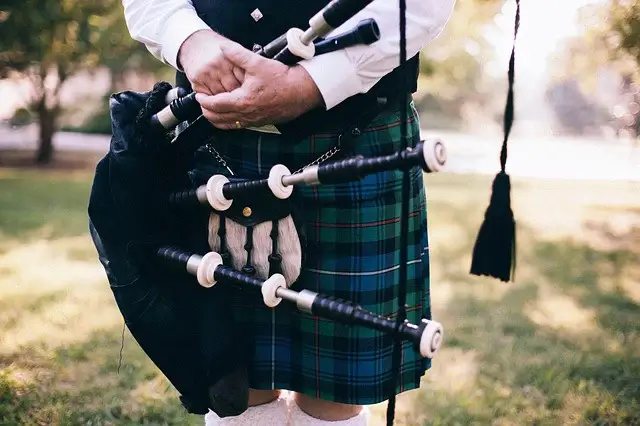Posted by Maris on 25th Jul 2023
19 Fun And Interesting Facts About The Bagpipes You Might Not Know
Loud, bold, and patriotic, the Bagpipes are a fascinating, versatile instrument. The pipers’ shrill made its way to war front lines, cultural festivals, modern concerts, and even the Queen’s summit.
A bagpipe is a manifestation of challenging ease; so simple in design, yet so intricate in its sounds! With a rich history full of twists and turns, there are a lot of facts about the bagpipes that you probably didn’t know. Let’s take a look at some of them.
The Bagpipes Used to be Literal Skin Bags

Sounds awful, but it’s true. The Bagpipes were first made of the skin of dead animals like smaller goats or sheep.
The animal’s carcass would be cleaned and turned inside out. (Yes, the moisture inside this thing was insane!)
Then, the pipes were made out of hollow stalks or bamboo and then installed and sewn where the neck and limbs used to be.
Today, some people may choose to get skin bagpipes, especially Maltese Zaqq pipers.
However, it’s just more convenient to use synthetic leathers, plastic, and metals.
Related Posts:
The Scottish Thistle – Why It’s The Perfect National Flower
The 10 Most Common Scottish Surnames & Their Clan History
Bagpipes Were War Instruments

During the first world war, and even the second, Scottish soldiers would often march into the war to the tunes of bagpipes.
Military generals believed that the shrill of bagpipes would scare the enemy.
This practice is thought to have started during the Battle of Culloden when the Scottish pipers marched to battle playing.
Soon, every battle had its line of pipers, and it came to the point that the Highland Regiment wouldn’t walk into battle without pipe music.
Pipers Can Be Heard 10 Miles Away

Pipers chose The Great Highland Bagpipes (GHB) in battles for their high volume.
It’s believed that their music could be heard as far as 10 miles out!
No wonder they were used to spread fear among the enemy lines.
Other pipes like the Borderpipe or the Irish Uilleann pipes have a more moderate volume level.
You Can’t Adjust the Volume on a Bagpipe
Ironically enough, pipers can’t adjust the volume on their instruments and Bagpipes have no dynamics.
Instead, you can only just adjust the speed or stretch out the tones.
Some pipers use silencer bags to keep the volume down.
However, the best way to pipe quieter is to get a smaller pipe altogether.
Piping Was Outlawed… Twice
After the 1560’s Reformation, the British government banned both piping and wearing the kilt.
The Second ban was after the 1745 uprising in Scotland.
Since bagpipes were considered war instruments, many pipers were hanged for owning bagpipes.
Bagpipes Have No Note-Breaks

Bagpipes are aerophones, with at least one drone pipe meaning that once you start playing, there’s a constant stream of air flowing through the drones.
Because drone pipes aren’t controlled with fingers, you get continuous notes.
Unlike many musical instruments, you can’t have a break between one note and the next.
Instead, pipers can rely on grace notes to separate between tunes.
Bagpipes Have One Pitch Only
Besides the drone pipe, a bagpipe has a melody pipe which is called the chanter.
This chanter can only produce nine notes: low G, low A, B, C, D, E, F, high G, and high A.
Since bagpipes lack a dynamic range, you can’t change the pitch or play in different keys.
Every pipe has its setup and you just have to work your way around it.
Traditionally, the bagpipe plays at around 440 Hz for the A note pitch, however, many pipers today are opting for sets around the B/C range.
Moisture Control Is Important for Bagpipes
Even in synthetic bagpipe setups, moisture is bound to happen since there’s a flow of warm air getting condensed.
Moisture control systems protect the chanter pipe wood against damage.
Too much humidity can flatten out some notes, particularly B, C, E, and F.
However, a bagpipe shouldn’t dry out completely, either.
Pipers prefer to store their instruments with a cork at the chanter to prevent splitting.
The Piper’s Pose Matters

When you’re learning to play the bagpipe, it’s important to adjust your pose and you’ll need to know how to hold the pipe and where to place your fingers.
There’s also a special technique for left-handed pipers.
Most bagpipes can be played standing up and even walking around, however, Uilleann pipes must be played sitting down.
The UK Queen Has a Thing for Bagpipes (Allegedly!)
There’s a running rumor about the Queen’s love for bagpipes
It’s said that instead of regular alarms, England’s Queen prefers to wake to the shrill of a bagpipe band playing under her window.
This pipe session lasts for about 15 minutes.
Back in 2015, Francesco Sultana played for the Queen at the Commonwealth Heads of State Summit.
Sultana used a Maltese Zaqq, which’s a bagpipe made of a goat’s emptied-out carcass… Lovely!
You Don’t Have to Pipe with Your Mouth

Bagpipes are aerophone double woodwind instruments which means they produce sounds by forcing air through a reed.
However, it isn’t always easy to maintain a continuous air current. Asthma, anyone?
Thankfully, you don’t have to be able to blow air with your mouth to play the bagpipe.
Cauld Wind Pipes are a type of bagpipe that are played with bellows rather than blowing air into them.
There’s a Special Indoor-Bagpipe
Smallpipes are a type of Cauld Wind pipes with a lower volume level.
A traditional Smallpipe has a volume that’s just about the same as the clarinet.
Below-blown Smallpipes are often used for indoor piping or practice sessions.
They’re even more economical than larger-volume border pipes.
So, if you are just getting started, we’d recommend going for a Smallpipe as it’ll save you money, and keep your neighbors happy.
Bagpipes Can Be Played in the Rain
Pipe bands often have to play at outside events and marches.
Sooner or later, a piper will have to survive an event under the rain.
Obviously, rain can affect the wood in the drone and melody pipes, however, the best thing to do when it’s running is to keep playing!
If the airflow stops, water seeps into the pipe’s body and the tune will be ruined.
Pipers can also turn their pipes upside down during breaks.
Piping is Easier with Altitude
The more you rise above sea level, the easier piping becomes as in a thinner atmosphere, you’ll meet less resistance when blowing the bagpipe.
On the downside, elevation can sometimes mean low humidity and with extremely dry air, wood can crack and split.
Some pipers try to lock in the moisture with ices cubes, corks, or air-tight bags.
Piping Isn’t Inherently Scottish
It’s a common misconception that bagpipes are Scottish.
There are a lot of theories about where the bagpipes first were developed with its history taking you to the Balkan countries, India, Libya, Sweden and Egypt.
But, it’s thought that the bagpipes were brought to Scotland by the invading Romans.
Yet, for some reason, people associate bagpipes with Scotland. Maybe it’s the piper’s kilt?
New Zealand Has More Pipers Than Scotland
Even though the bagpipes have historical roots all over the world, they have become associated with Scotland.
But, despite being an inherently Scottish instrument, Scotland isn’t even the country with the most pipers.
New Zealand is so rich with pipe bands that even the police have their own band!
The band performs in major events, as a morale booster to both the cops and the public.
AC/DC Singer Learned Piping in a Year
Bagpipes aren’t limited to violent historical themes and this versatile instrument made its way to rock and roll music, as well.
In fact, AC/DC’s singer Ben Scott used to pipe in live concerts for a long duration of his musical career.
Ben Scott learned to pipe from Kevin Colon in around 12 months.
Later, Colon was asked to record the music video for “It’s a Long Way to the Top” with the band.
The Number One Bagpipe Song in Scotland is “Brave”
Bagpipes might not be inherently Scottish, but many of the songs we know and love came from Scotland.
One of the most common bagpipe songs is “Scotland the Brave,” an unofficial Scottish anthem.
Today, the patriotic anthem is often played at military celebrations, graduation parties, and even FIFA events.
The History of Bagpipe Songs can be Bloody
Not all bagpipe songs are created equal.
Some are victorious patriotic anthems, while others are tales of vengeful arson.
A Flame of Wrath for Patrick MacCrimmon is a classical Highland bagpipe song that rises from a dark theme.
The song tells the story of a Genleg Piper who lights his entire village on fire to avenge the murder of his brother.

